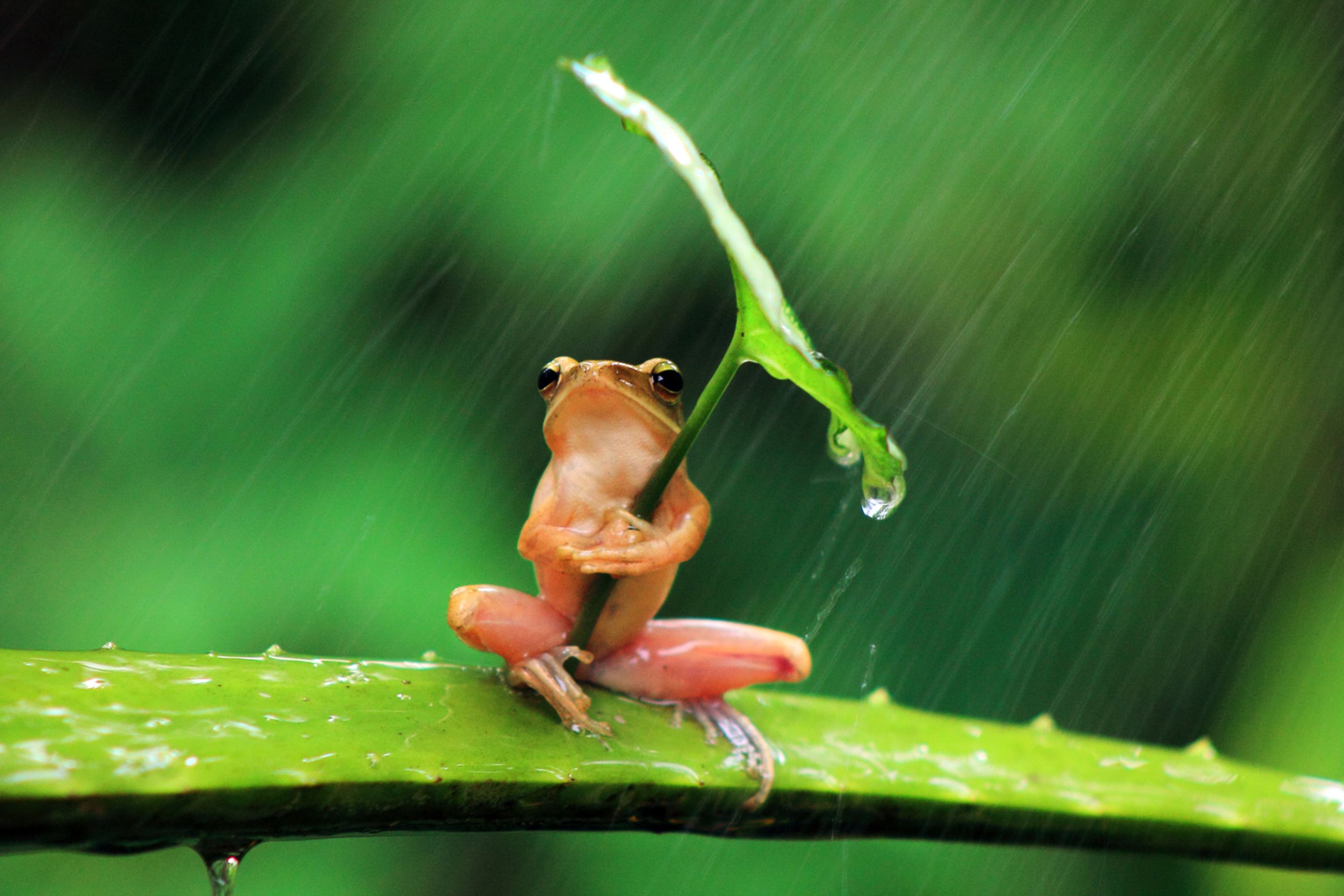
A rare and elusive species of frog has been discovered in the rainforests of South East Asia with a unique penchant for one particular type of ornamentation: wearing a vast array of fanciful hats and headpieces.
The ‘pale pink frog’, whose Latin name Idrafloris hyphantes literally translates means ‘skilful flower holder’ was observed by researchers on a six-month-long expedition to Papua New Guinea—funded by Germany’s Leibniz Institute for Zoo and Wildlife (IZW)—to regularly and routinely picks up plant matter from the rainforest floor to indulge in their amour fou for millinery
Leaves were the standard headwear of choice for the pale pink frog, which regularly donned the flora during the rainforest’s frequent daily deluges. However when the sun shines, the species—which is about the size of your thumb—was also observed picking the stalks of the country’s scented frangipani flowers for placement with much aplomb on their happy little heads.
It’s not known exactly why the frogs engage in such behaviour, but Papuan Expedition Leader Sloof lripa believes it could serve a dual role, both as protection against the elements and for attracting a mate.
‘The pale pink frog—which can actually have more of a purplish hue in real life—doesn’t particularly enjoy Papua’s temperamental weather system,’ he explained. ‘whenever the frogs gets too wet or too hot, their first reaction seems to be to pick up a homemade “hat” as shelter against the island’s extreme elements.
‘It’s all quite bizarre,’ Sloof added, ‘but even that behaviour pales in comparison to the frog’s unique courtship display: In my thirty-odd years as a zoologist I’ve never seen anything quite like it.’
The advanced courtship display in question involves male members of the pale pink species rubbing their heads against as many frangipani flowers as it can find, before finding a spot on a log or other raised platform off the rainforest floor, waiting there absolutely stock-still for hours at a time.
Eventually the strong scent of the flowers, complimented by the animal’s naturally fragrant musk, attracts butterflies, which land on the amphibian’s head to feast on the nectar. The male pale pink frog then purposely show off what could be considered one of the most dazzling sights in the entire Animal Kingdom, a ‘butterfly crown’, the display wooing all nearby females as if by instantaneous magic on virtually every occasion the act was observed.
IZW Spokesperson Gott Cha said: ‘Our team couldn’t believe it when these frogs displayed their beautiful crowns for the first time: we had to check and double-check to make sure the action wasn’t a one off event but a species-wide ritualistic courtship demonstration.”

‘What’s more, the frogs, the butterflies and the flowers all seem to benefit from this amazingly intricate courtship display; we think this could be the most complex symbiotic relationship ever observed in the wild.’
‘The very concept of luring butterflies to display as ornamentation bring to mind the higher order concepts of forethought and abstractionism,’ concluded Gott, ‘something we have difficulty conclusively pinning to intelligent animals such as elephants and dolphins, let alone frogs. This could be the most important wildlife discovery of the last decade, that’s for sure.’
Accounts from local islanders that the pale pink frogs can sometimes been seen riding Rhinoceros beetles into ‘battle’ with competing males, has so far been dismissed as being too much of a tall tale to be believable, for now.
